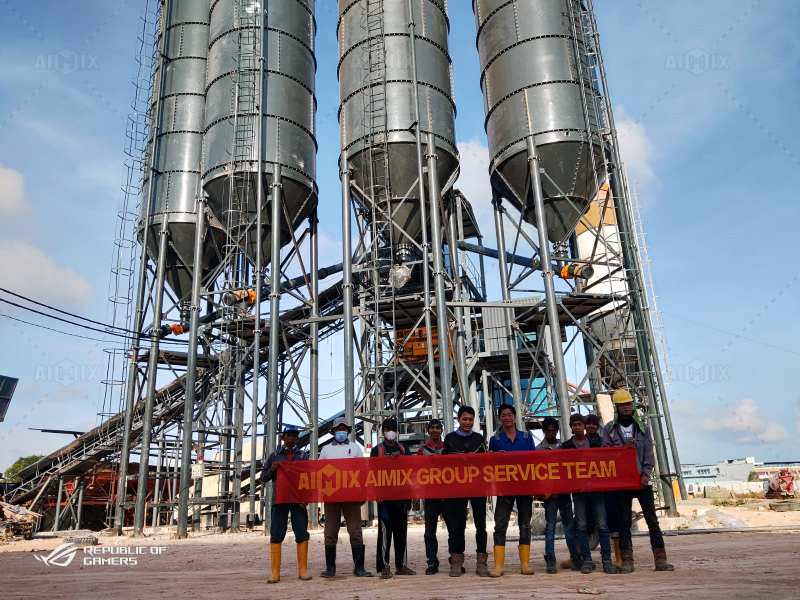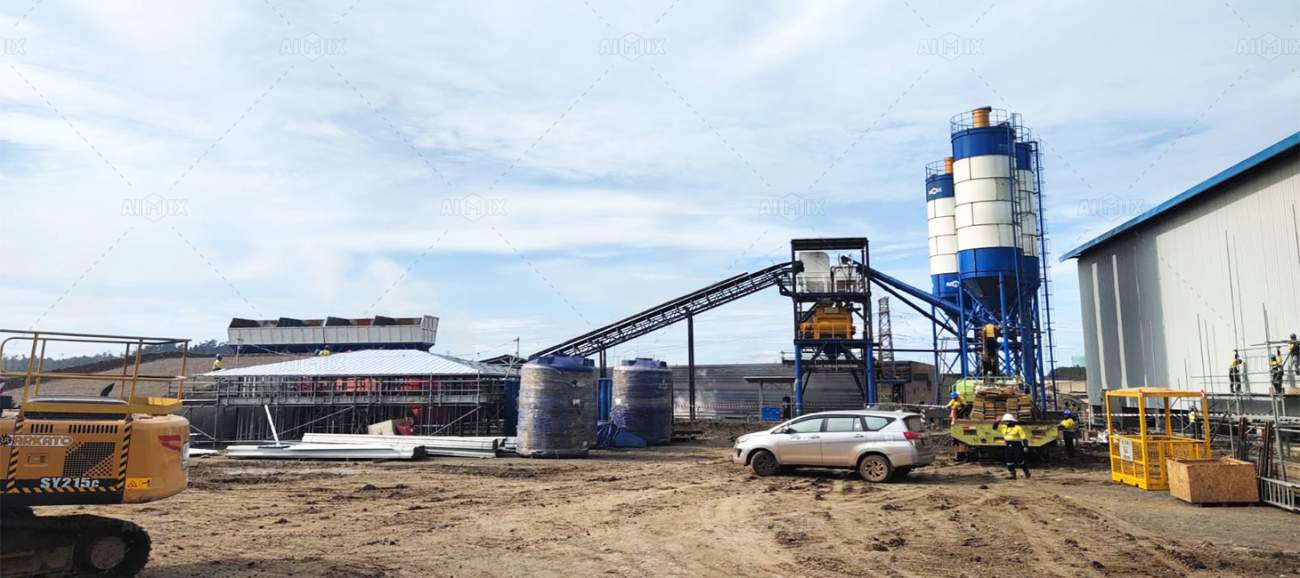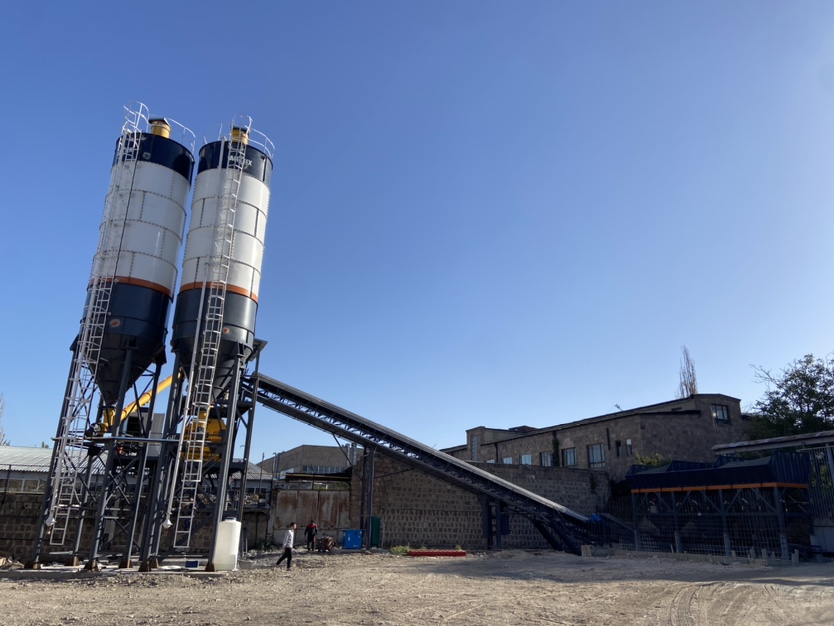Concrete batching plants are essential for producing high-quality concrete for construction projects. Whether you’re working on a large-scale infrastructure project, a commercial development, or a smaller residential job, selecting the right concrete batching plant is crucial. One of the primary factors that affect the overall cost of concrete batching plant is its features and capacity. Understanding these elements can help businesses make informed decisions when purchasing a concrete batch plant for sale, particularly when comparing different types of plants such as ready-mixed concrete plants and stationary batching plants.

The Role of Capacity in Concrete Batching Plant Cost
Capacity is one of the most important factors influencing the cost of concrete batching plants. The capacity of a batching plant refers to the volume of concrete it can produce per hour. Generally, batching plants are available in a range of capacities, from small plants capable of producing 20 cubic meters of concrete per hour to larger plants capable of producing 200 cubic meters or more.
- Small to Medium Capacity Plants: For small to medium-sized construction projects, a batching plant with a capacity of 20 to 60 cubic meters per hour may be sufficient. These plants are often used in commercial projects, smaller residential buildings, or for supplying concrete to a few job sites. The cost of these smaller plants is lower due to their reduced production capacity and simpler design. For instance, a concrete batch plant for sale with a smaller capacity can cost anywhere from $30,000 to $100,000, depending on features and brand.
- Large Capacity Plants: For larger projects or continuous high-demand operations, a higher-capacity plant is needed. A plant that can produce 100 cubic meters per hour or more is suitable for large-scale infrastructure projects such as highways, bridges, or commercial buildings. The cost of these large batching plants can be significantly higher, ranging from $150,000 to $500,000 or more. Higher-capacity plants come with advanced features, including automated systems, higher-end mixers, and additional silos for storing materials.

Features and Their Impact on Concrete Batching Plant Cost
The features of a concrete batching plant can significantly impact its price. More advanced and customized features usually come at a higher cost, but they also bring added efficiency, productivity, and accuracy. Some of the key features that can affect the price include:
1. Automation and Control Systems
Modern concrete batching plants come with automated control systems that improve accuracy, reduce labor costs, and increase efficiency. Automation allows for precise mixing of ingredients, tracking of batch weights, and real-time monitoring of operations. Plants with advanced automation features may include:
- Touchscreen control panels
- Remote control capabilities
- Automated weighing and batching systems
- Real-time data logging and analysis
Automated systems not only enhance operational efficiency but also reduce human error. While plants with more sophisticated control systems come at a premium, they can save long-term costs through improved productivity and reduced labor requirements.
2. Batching and Mixing Equipment
The type and quality of the batching and mixing equipment used in the plant also affect its price. For example, a plant with a high-performance twin-shaft mixer, which offers superior mixing capabilities and speed, will typically cost more than one with a basic drum mixer. High-end mixers deliver a more consistent mix and are better suited for large-scale projects where high-quality concrete is required.
3. Water and Cement Storage Systems
Concrete batching plants often require additional equipment such as water tanks, cement silos, and aggregate storage bins. These systems help ensure that raw materials are readily available for the production of concrete and allow for better management of supply chains. The inclusion of additional silos, water recycling systems, and other storage solutions can increase the plant’s price, but they also help optimize operations and minimize waste.
4. Energy Efficiency and Environmental Features
As environmental concerns become more prominent, many batching plants are incorporating energy-efficient technologies and eco-friendly features. These may include:
- Dust control systems
- Water recycling systems
- Low-energy components
- Sustainable mixing techniques
While these features increase the initial cost of the plant, they help businesses comply with environmental regulations and reduce operating costs in the long run. Energy-efficient plants can lower power consumption, and water recycling systems can reduce water costs on large projects. Additionally, dust control systems help maintain a clean working environment, which improves health and safety conditions on the job site.

The Differences Between Ready-Mixed Concrete Plants and Stationary Batching Plants
Another factor that impacts the cost of concrete batching plants is the type of plant selected. Two popular types are ready mixed concrete plants and stationary batching plants, and understanding the differences between them is important when evaluating costs.
1. Ready-Mixed Concrete Plants
Ready-mixed concrete plants are designed for producing and delivering concrete to construction sites in a pre-mixed form. These plants are often used for large-volume concrete production, as they provide the advantage of consistent, high-quality concrete delivered on-site as needed.
Ready-mixed concrete plants are typically more expensive than simple stationary plants due to their larger capacity and added delivery systems. In addition to the batching plant itself, ready-mix operations require fleet vehicles for delivering concrete, which adds to the overall cost. These plants are ideal for large-scale projects, such as commercial buildings, highways, and infrastructure projects, where a steady supply of concrete is needed.
The cost of ready-mixed concrete plants can range from $100,000 to $500,000 or more, depending on the plant’s capacity, features, and the infrastructure required for concrete delivery.
2. Stationary Batching Plants
Stationary batching plants are designed to stay in one location for the duration of a project. These plants are often used for long-term projects where large quantities of concrete need to be produced consistently over time. Stationary plants offer higher production capacities and are ideal for large-scale infrastructure projects, such as dams, roads, and bridges.
Because stationary batching plants have higher capacities, more sophisticated automation, and larger storage systems, they tend to be more expensive than mobile batching plants. However, they are a more cost-effective solution for businesses that require continuous concrete production for extended periods.
The price of stationary batching plants varies widely depending on the production capacity and features. On average, these plants can cost anywhere from $100,000 to over $500,000.
Conclusion
The cost of concrete batching plants is determined by several factors, including the plant’s capacity, the features it offers, and the type of batching plant selected. Smaller plants with lower capacity will be more affordable, while larger plants with advanced automation, mixing equipment, and environmental features come at a higher price.
For businesses seeking to purchase a concrete batch plant for sale, it’s important to evaluate the needs of your project and determine the features and capacity required for optimal efficiency. Whether you’re considering ready-mixed concrete plants or stationary batching plants, understanding the factors that impact price will help you make a more informed investment and ensure that you select the most cost-effective solution for your business.